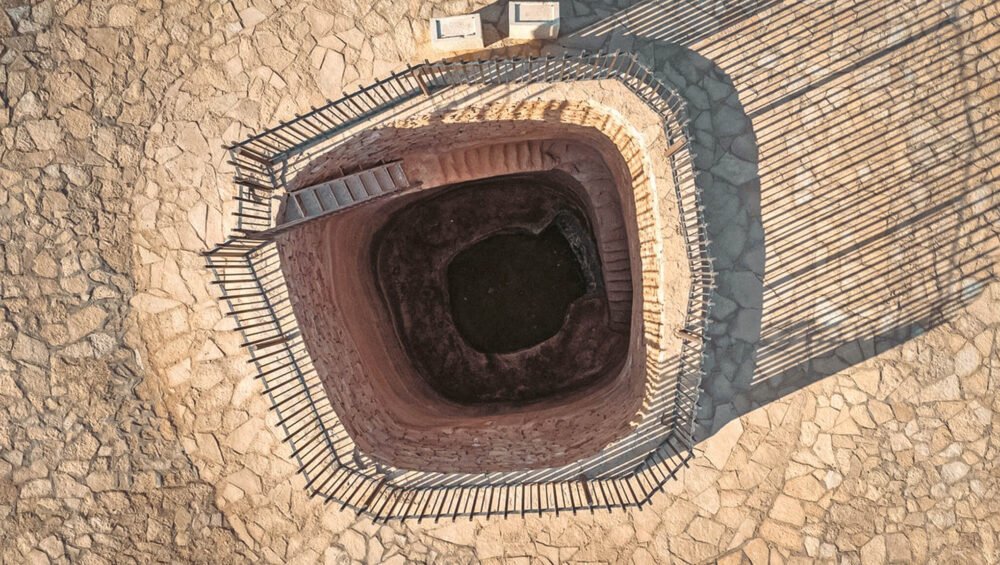
Sisra Well is one of the archaeological wells in the Al-Jawf region in Saudi Arabia. It is a well carved into the rock west of Zaabal Fort. A staircase carved into the rock was built on one side of it, and at the bottom there is a rectangular opening followed by a larger opening, which confirms that this well was a source of water for the ancient springs in the region. Sisera Well is a well dug in sandstone, and takes an oval shape with diameters of 8m x 7m, and a depth of about 15m. Steps were carved on its inner sides that reach its bottom, and there is a channel dug in the rock inside it that was used to transport water to the farms. This type of irrigation system was known during the Nabataean period (first century AD). The site was restored and the well was surrounded by trunks for protection and the surrounding area was paved with stones. There is a paved road leading to the site. This site has archaeological and heritage importance in addition to its touristic integration with the site of Zaabal Castle and the Zaabal neighborhood, in addition to the uniqueness of its digging method. Al-Jawf was visited by an archaeologist named Professor Winnett and his colleague Reed in 1962 AD. They said: “This well resembles a pond for the mother found in Al-Jib in Palestine. It is known that some of the low-lying areas in Sakaka surrounding the well from the eastern and southern sides were irrigated with well water through underground tunnels, as well as through channels on the surface of the The land is carved into the rock, and some parts of these canals were discovered by chance after being buried in sand.

